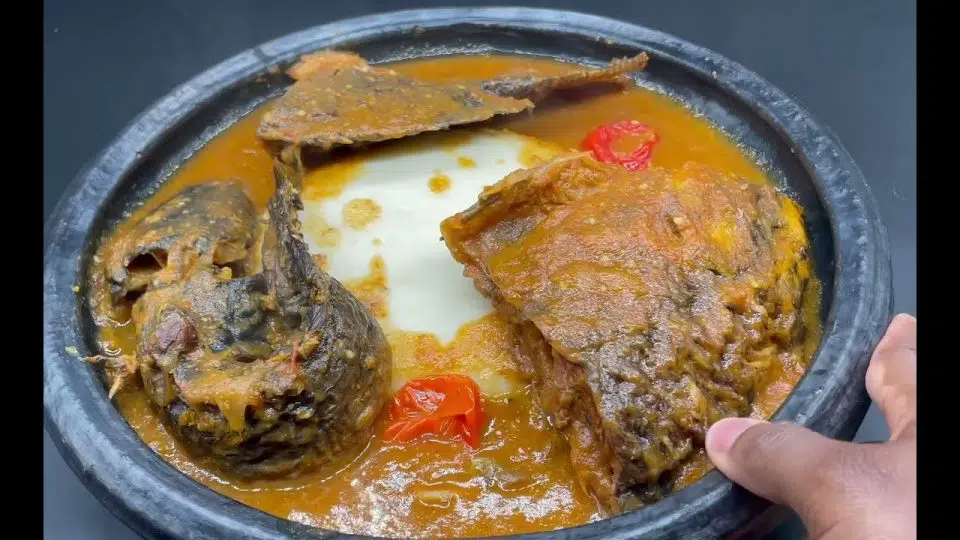Introduction: What is foufou?
Foufou is a traditional African dish made by mashing starchy vegetables like yams, cassava, or plantains into a smooth, dough-like consistency. It is a staple food in many African countries, particularly in West and Central Africa, where it is served with various soups, stews, and sauces. The dish is known for its distinct texture and flavor, and it is often eaten with the hands.
Origins and history of foufou
The origins of foufou can be traced back to West and Central Africa, where it has been a traditional diet for centuries. The dish is believed to have originated in the Congo Basin, where cassava, one of the main ingredients, was first cultivated. Over time, foufou spread to other parts of Africa and became a popular dish in many countries, including Nigeria, Ghana, Cameroon, and Cote d’Ivoire. Today, foufou is not only a household staple but also a cultural symbol that reflects the rich history and diversity of African cuisine.
Ingredients used in foufou
Foufou is made from starchy vegetables like yams, cassava, or plantains that are boiled, mashed, and kneaded into a smooth, elastic dough. The preparation may also involve adding water and/or palm oil to the mixture to achieve the desired consistency. While the basic recipe for foufou is simple, the type of starch used can vary depending on the region and the cook’s preference. For instance, in Nigeria, foufou made from yams is called “pounded yam,” while in Ghana, it is called “fufu.”
The preparation process of foufou
To make foufou, the starchy vegetables are first peeled and cut into chunks, then boiled until they are soft and tender. Once cooked, the vegetables are drained and mashed using a mortar and pestle or a food processor until they form a smooth, sticky paste. The paste is then kneaded vigorously by hand or using a wooden pestle until it becomes stretchy and elastic. The final step involves shaping the dough into small balls or portions that are served with soups or stews.
Variations of foufou across different cultures
While foufou is a staple food in many African countries, there are variations in the recipe and the serving method depending on the region and the culture. For example, in Cameroon, foufou is often made from plantains and served with a spicy fish stew called “ndole.” In Nigeria, foufou is made from yams or cassava and served with a variety of soups and stews, including egusi soup, vegetable soup, and pepper soup. In Ghana, foufou is made from cassava or plantains and served with soup or stew, often featuring meat or fish.
Nutritional value and health benefits of foufou
Foufou is a high-carb, low-fat food that is rich in fiber, vitamins, and minerals. It is an excellent source of complex carbohydrates that provide sustained energy and can help regulate blood sugar levels. Foufou is also rich in potassium, which is essential for healthy blood pressure and heart function. Additionally, the dish is gluten-free, making it a suitable option for people with celiac disease or gluten sensitivity.
Serving suggestions for foufou
Foufou is typically served with soup, stew, or sauce, which provides additional flavor and nutrients. Some popular soups and stews that go well with foufou include okra soup, peanut soup, tomato stew, and vegetable soup. The dish is often eaten with the hands, and the balls of dough are used to scoop up the soup or stew. In some cultures, foufou is also served with fried or grilled meat or fish.
Conclusion: Why try making foufou at home?
Foufou is a delicious and nutritious dish that is easy to make at home. With its humble ingredients and simple preparation process, foufou is a great way to explore the rich and diverse cuisine of Africa. Making foufou from scratch can also be a fun and rewarding experience that allows you to connect with your heritage or learn about a new culture. So why not try making foufou at home and experience the flavors and traditions of Africa?

